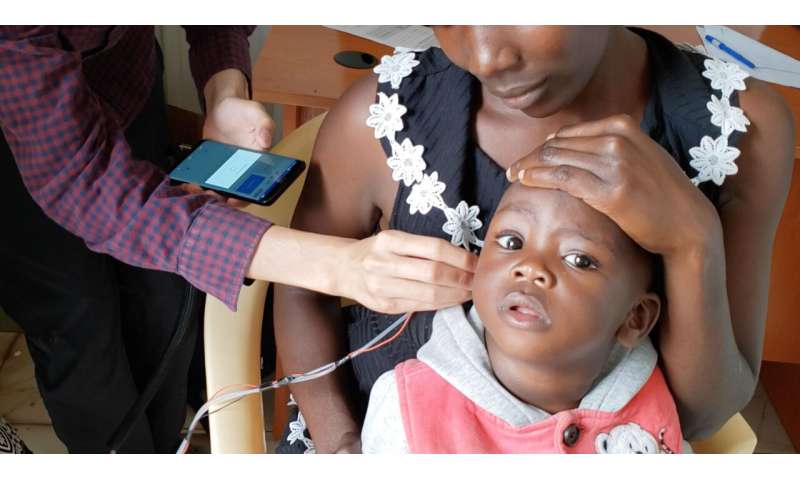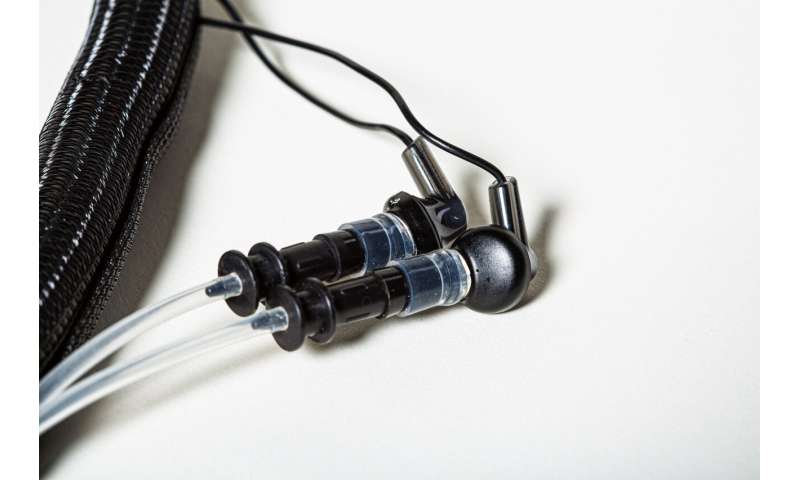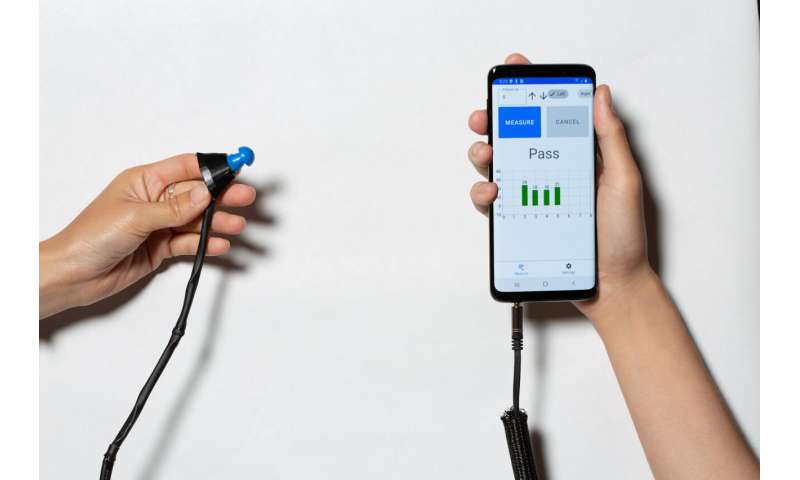
Newborns across the United States are screened to check for hearing loss. This test is important because it helps families better understand their child’s health, but it’s often not accessible to children in other countries because the screening device is expensive.
A team led by researchers at the University of Washington has created a new hearing screening system that uses a smartphone and low-cost earbuds instead. The team tested this device with 114 patients, including 52 babies up to 6 months old. The researchers also tested the device on pediatric patients with known hearing loss. Their tool performed as well as the commercial device, and it correctly identified all patients with hearing loss.
The team published these results Oct. 31 in Nature Biomedical Engineering.
“There is a huge amount of health inequity in the world. I grew up in a country where there was no hearing screening available, in part because the screening device itself is pretty expensive,” said senior author Shyam Gollakota, a UW professor in the Paul G. Allen School of Computer Science & Engineering. “The project here is to leverage the ubiquity of mobile devices people across the world already have—smartphones and $2 to $3 earbuds—to make newborn hearing screening something that’s accessible to all without sacrificing quality.”

Because babies can’t tell doctors whether they can hear a given sound, these tests rely on the mechanics of the ear.
“When an external sound is played, hair cells in the inner ear move and vibrate. The result is a very quiet sound that our instruments can pick up,” said co-author Dr. Randall Bly, an associate professor of otolaryngology-head and neck surgery at the UW School of Medicine who practices at Seattle Children’s Hospital. “This screening is very sensitive, meaning that if there is a concern about a patient’s hearing, they will be referred for a more thorough evaluation with a specialist.”
For the test, doctors send two different tones into the ear at the same time. Based on those tones, the hair cells in the ear vibrate and create a third tone, which is what the doctors are listening for.

One reason the commercial device is expensive is that its speaker has been designed to play the two tones without any interference. The UW researchers found that they could use affordable earbuds—where each earbud plays one of the two tones—instead. The earbuds are connected to a microphone in a probe that can be placed in the patient’s ear. The microphone records any sounds from the ear and sends them to a smartphone for processing.
“As you can imagine, these sounds that are coming out from the ear are very soft, and sometimes it’s hard to hear them over noise in the environment or if the patient is moving their head,” said lead author Justin Chan, a UW doctoral student in the Allen School. “We designed algorithms on the phone that help us detect the signal even with all that background noise. These algorithms can run in real time on any smartphone and do not require the latest smartphone models.”
The researchers tested their device at three hearing clinics in the Puget Sound area in the state of Washington. For each test, they tested four different frequencies, which is typical for these types of hearing screenings. Participants ranged in age from a few weeks to 20 years old.

Now the team is working with collaborators to use this tool as part of a newborn hearing screening project in Kenya. The researchers teamed up with a group from the UW global health department, the University of Nairobi and the Kenya Ministry of Health to create the project “Toward Universal Newborn and Early Childhood Hearing Screening in Kenya,” or TUNE.
Source: Read Full Article
